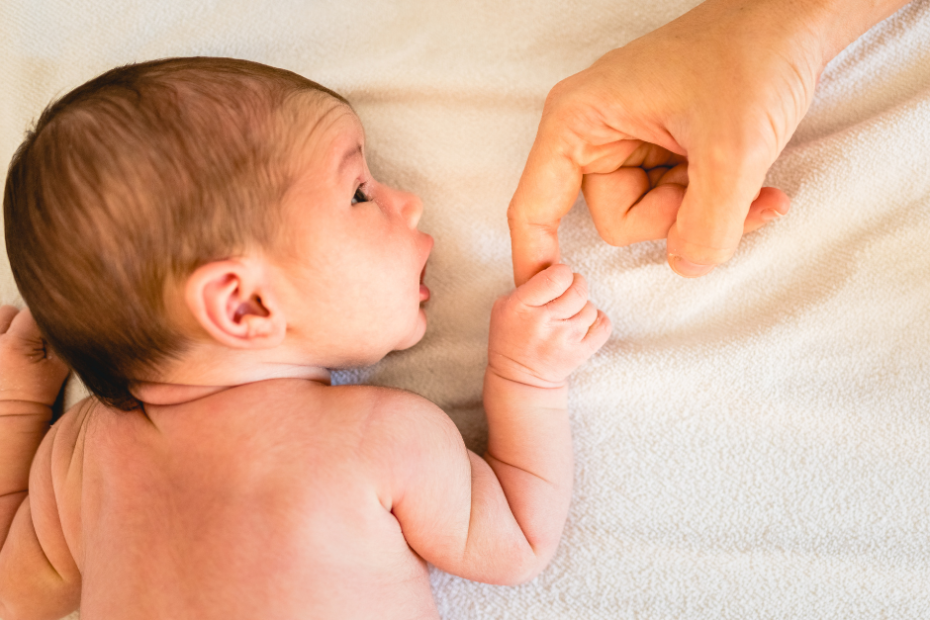Before a baby is born, or ever takes their first step, reaches for a toy, or rolls across the floor, a remarkable sequence of automatic movements has already begun shaping their development. These early movements are primitive reflex movements and are the body’s built-in blueprint for survival and growth. They are the foundation upon which all later voluntary movement, balance, coordination, and learning are built.
What Are Primitive Reflexes?
Primitive reflexes are automatic, instinctive movements that appear in predictable patterns and are essential for an infant’s survival in the early months of life. For example, the rooting and sucking reflexes ensure that a newborn can find and feed from the breast or bottle, while the grasp reflex allows the baby to hold on tightly to a caregiver’s finger—helping to strengthen emotional bonding and muscle tone.
These reflexes are not conscious or learned behaviours. They are nature’s way of “switching on” the neuromuscular system, helping the baby practice the basic building blocks of movement long before they are ready to control their body deliberately.
How Reflexes Drive Early Movement
Each reflex serves a unique purpose in stimulating specific muscles, joints, and sensory systems. Together, they help wire the brain for balance, coordination, and motor control. Here’s how some of the key reflexes help kick-start an infant’s movement journey:
- Moro Reflex (Startle Reflex): When a baby experiences a sudden change in position or sound, they fling their arms out and then draw them back in. This reflex trains the vestibular system—the part of the brain responsible for balance and spatial awareness—and begins to connect sensory input with physical response.
- Tonic Labyrinthine Reflex (TLR): When the baby’s head moves forward or backward, the rest of the body follows. Flexing the head forward curls the body into a foetal position; tipping the head back causes the arms and legs to extend. These movements strengthen core muscles and lay the groundwork for rolling, sitting, and eventually standing upright.
- Asymmetrical Tonic Neck Reflex (ATNR): Often called the “fencer’s pose,” this reflex occurs when a baby turns their head to one side—the arm and leg on that side extend while the opposite limbs bend. ATNR helps develop eye–hand coordination and is the first step toward reaching and crossing the midline, essential for later skills like writing and reading.
- Spinal Galant Reflex: When the lower back is stroked, the baby’s hips move toward the stimulus. This reflex encourages crawling movements and helps develop trunk rotation and mobility.
- Rooting and Sucking Reflexes: These are vital for feeding but also stimulate muscles of the face and jaw, preparing the baby for speech development later on.
Through these reflexive actions, the infant’s body is constantly practicing movement patterns, building strength, flexibility, and the neural pathways that will later allow for controlled movement. Each repetition helps the brain create neural pathways and learn about cause and effect—how movement feels, what happens when muscles activate, and how the body interacts with gravity and space.
The Role of Reflex Integration
As the baby grows, the brain matures and begins to inhibit or “integrate” these primitive reflexes. This process allows voluntary control to take over. For example, by around 4 to 6 months, the Moro reflex fades as the child develops postural control and can manage startle responses without flailing. The ATNR disappears as the baby learns to roll and coordinate both sides of the body.
When integration occurs smoothly, the child gains balance, stability, and coordination—the essential ingredients for sitting, crawling, walking, and later, for tasks like reading, writing, and sports. Essentially, primitive reflexes train the nervous system: they provide crucial support early on but must eventually step aside for refined, voluntary movement to take over.
When Reflexes Don’t Integrate Properly
Sometimes, due to factors like birth trauma, lack of tummy time, illness, or neurological immaturity, primitive reflexes do not fully integrate. When this happens, the reflex patterns can continue to influence movement and posture long past infancy. Children with retained reflexes may show signs such as poor balance, clumsiness, difficulties with reading or writing, or challenges in focusing and sitting still.
Understanding and identifying these retained patterns allows parents and professionals to use movement-based programs, such as Rhythmic Movement Training (RMTi) or other reflex integration therapies, to gently reintroduce and complete the movements that the nervous system missed. This helps the brain reorganize and achieve the developmental milestones that underlie higher learning and emotional regulation.
The Big Picture
Primitive reflexes are more than jerky, wobbly baby movements—they are the foundation of the human movement system. From the first stretch inside the womb to the triumphant first steps, these automatic responses teach the infant’s body how to move, balance, and relate to the world. They are the neurological trigger for development, ensuring the brain and body learn to develop and work together in harmony.
